-
2019.07.31
Cockroach is one of the most important sources of indoor allergens that can lead to IgE sensitization and to the development of rhinitis and asthma. READ MORE
READ MORE -
2019.07.31
RATIONALE: To determine the agreement between ImmunoCAP cow's milk-specific IgE measurements and IgE antibody responses to individual allergic milk protein components. READ MORE
READ MORE -
2019.06.26
RATIONALE: Birch pollen allergy with the single major allergen Bet v 1 is a paradigm to study the molecular interplay of IgE and IgG1 or IgG4 in sensitization and allergen immunotherapy. However, there is a lack in the availability of such antibodies. We here aimed to fuel our antibody PIPEline by using Polymerase Incomplete Primer Extension (PIPE) cloning (Ilieva et al., 2017), the latest method for fast creation of different classes of antibodies sharing the same variable region. READ MORE
READ MORE -
2019.06.26
The major timothy grass pollen allergen Phl p 5 belongs to the most potent allergens involved in hay fever and asthma. READ MORE
READ MORE -
2019.05.17
Allergen-specific IgG4 increases during allergen specific immunotherapy (AIT). In this study, specific IgG4 against the individual major allergens of dust mites during AIT was investigated. READ MORE
READ MORE -
2019.05.17
There have been few studies conducted on the efficacy and safety of specific immunotherapy with allergen extracts of fungi compared with other allergen extracts, and there are no data on the major allergen Alt a 1 of the fungus Alternaria alternata.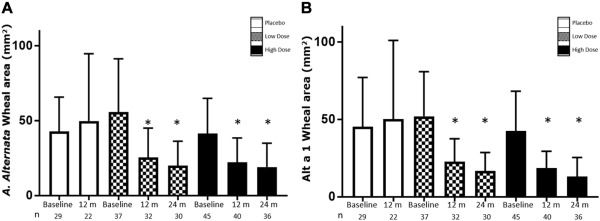 READ MORE
READ MORE -
2019.05.17
Cat allergy in human subjects is usually caused by the major cat allergen Fel d 1 and is found in approximately 10% of the Western population. Currently, there is no efficient and safe therapy for cat allergy available. Allergic patients usually try to avoid cats or treat their allergy symptoms.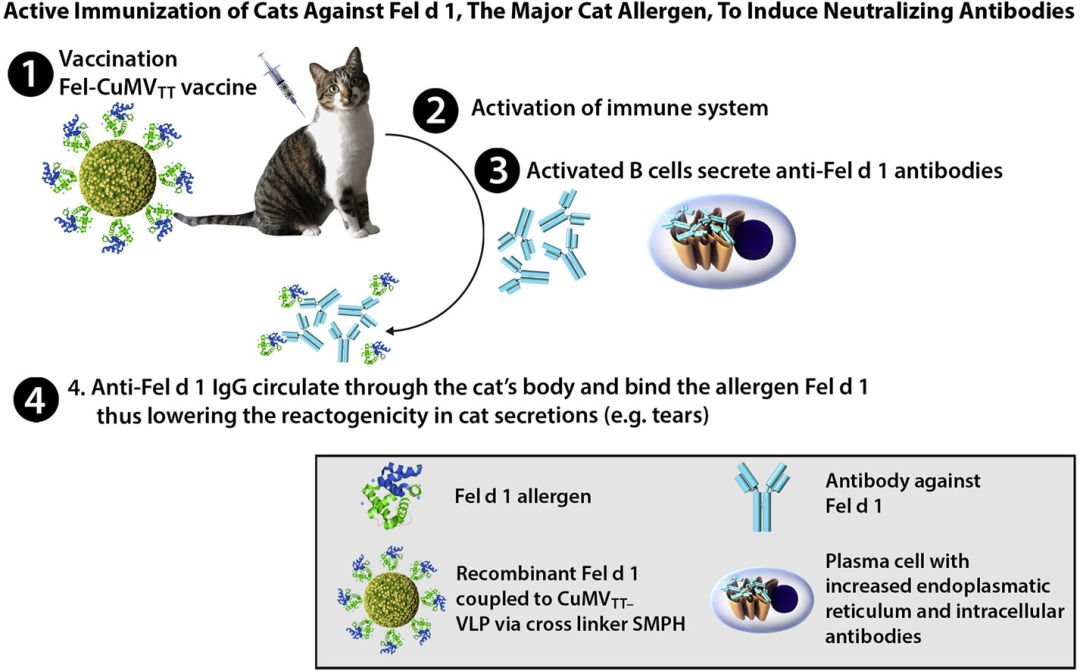 READ MORE
READ MORE -
2019.04.30
Allergen-specific immunotherapy (AIT) is a clinically and cost-effective allergy treatment that modifies the course of the disease and has long-lasting effects.1x1Cox, L., Calderón, M., and Pfaar, O. Subcutaneous allergen immunotherapy for allergic disease: examining efficacy, safety and cost-effectiveness of current and novel formulations. Immunotherapy. 2012; 4: 601–616 READ MORE
READ MORE -
2019.04.30
Type I allergic reactions to plant-derived food: A consequence of primary sensitization to pollen allergens https://doi.org/10.1016/S0091-6749(96)80062-5 Patients with pollen allergy also frequently experience allergic symptoms on ingestion of plantderived foods (fruits, vegetables, and spices). 1-3 The association of certain pollen allergies with food intolerance has led to the definition of clinical syndromes such as the celery-mugwort-birch pollen syndrome, the apple-birch pollen syndrome,and similar phenomena. More than 10 years ago, it was suggested that IgE antibodies that cross-react with pollen and food proteins could be responsible for the observed clinical phenomena. READ MORE
READ MORE -
2019.04.15
Background Over the last decades, genomics and proteomics have contributed to the current knowledge of individualized allergenic components and their potential use in the diagnosis of IgE‐mediated allergies. Recent investigations have demonstrated that Alt a 1 should be considered as a relevant allergen of the Pleosporaceae group and that enolase is the main allergen involved in the cross‐reactivity to fungi. However, the real utility of these allergens as tools for the diagnosis of allergy to Alternaria is still unclear. Objective To demonstrate the current value of the available fungal allergen panel and the need to build an accurate mould allergen array for the diagnosis of allergy to Pleosporaceae. READ MORE
READ MORE -
2019.03.27
Patients of allergic rhinitis (n=52) sensitized to dust mite were treated with subcutaneous immunotherapy using standardized D. pteronyssinus (Dp) extract. Patients with allergic rhinitis (n=14) sensitized to dust mites who received medications alone were controls. Specific IgE and IgG4 against Dp, D.farina(Df) and corresponding major allergens of group 1 (Dp1 and Df1) and group 2 (Dp2 and Df2) were measured before AIT, 6 months and 12 months later. READ MORE
READ MORE -
2019.03.15
Gibberellin‐regulated protein (GRP) is a new allergen in peach allergy, with an amino acid sequence very well conserved through several botanical species. We investigated the allergenicity of GRP in fruit allergies other than peaches and identified the clinical characteristics of fruit allergy patients with GRP sensitization. One hundred consecutive Japanese patients with fruit allergies were enrolled in the present study. To identify the features of GRP sensitization, we selected patients with negative ImmunoCAP results for Bet v 1 homologs and profilin, which are marker allergens for pollen‐food allergy syndrome (PFAS), or lipid transfer protein. These patients underwent specific immunoglobulin E measurements by enzyme‐linked immunosorbent assay (ELISA) and skin prick tests (SPT) using purified nPru p 7. READ MORE
READ MORE -
2019.03.01
IgE-mediated hypersensitivity to ingested animal products, including both mammalian and avian sources, is increasingly appreciated as an important form of food allergy. Traditionally described largely in children, it is now clear that allergy to meat (and animal viscera) impacts both children and adults and represents a heterogeneous group of allergic disorders with multiple distinct syndromes. The recognition of entities such as pork-cat syndrome and delayed anaphylaxis to red meat, i.e- the α-Gal syndrome, have shed light on fundamental, and in some cases newly appreciated, features of allergic disease. These include insights into routes of exposure and mechanisms of sensitization, as well as the realization that IgE-mediated reactions can be delayed by several hours. Here we review mammalian and avian meat allergy with an emphasis on the molecular allergens and pathways that contribute to disease, as well as the role of in vitro IgE testing in diagnosis and management. READ MORE
READ MORE -
2019.02.20
Exposure to furred pets is high. In Europe dog ownership varies from 9.0% to 34.8%,1 whereas in the United States 30.4% of the households own cats and 36.5% own dogs.2 However, the diagnosis of dog allergy is troublesome. In general, self-reporting misclassifies allergic status in many patients. Even a structured allergy history alone is little better and results in false-positive rates for dog allergy of 27% compared with formal allergy assessment.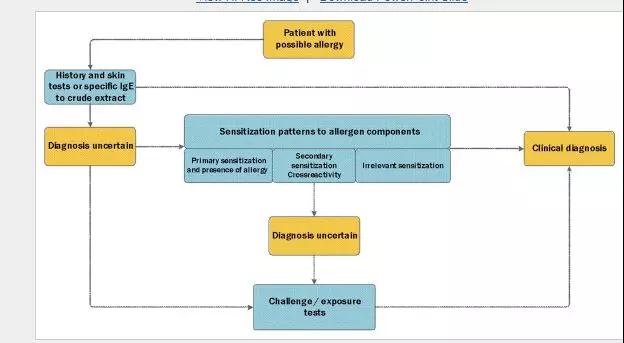 READ MORE
READ MORE -
2019.01.17
Molecular allergen- based component-resolved diagnostic IgE antibody tests have emerged in the form of singleplex assays and multiplex arrays. They use both native and recombinant allergen molecules, sometimes in combination with each other, to supplement allergen extract-based IgE antibody analyses. The total number of available allergenic molecules has reached a diagnostically useful level; however, more molecules are needed to cover all the clinically important allergen specificities.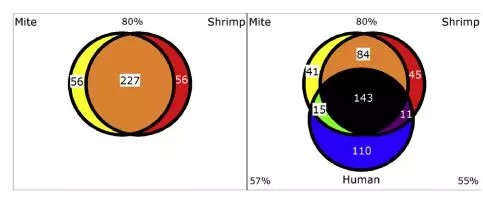 READ MORE
READ MORE -
2019.01.02
Various allergenic proteins are produced by house dust mites (HDM). However, the allergenicity and clinical implications of these allergens are unknown.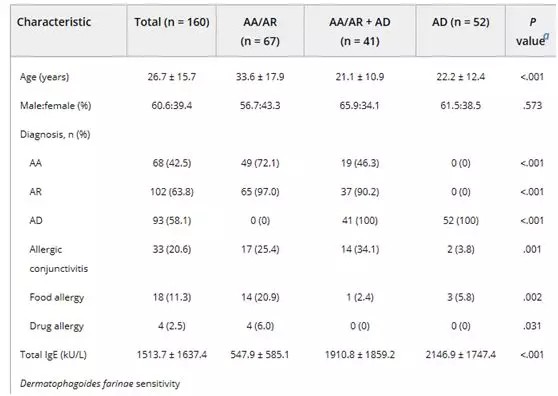 READ MORE
READ MORE -
2019.01.02
In patients allergic to mites IgE antibody test with a natural allergen extract does not reveal the nature of the sensitizing molecules. Polisensitization to House Dust Mites (HDM) and Storage Mites (SM) is frequently observed. The aim of this study is to define whether determination of molecular patterns of sensitization is useful for optimizing the diagnosis of these patients. READ MORE
READ MORE -
2019.01.02
Background: Component-resolved diagnostics using specific IgE to 2 S albumins has shown to be a valuable new option in diagnostic procedure. Ana o 3 is a 2 S albumin from cashew. The aim of this study was to investigate the role of Ana o 3-specific serum IgE in the diagnosis of cashew allergy and to identify cut-off levels to replace oral food challenges. Moreover, the value of additional determination of total IgE has been investigated.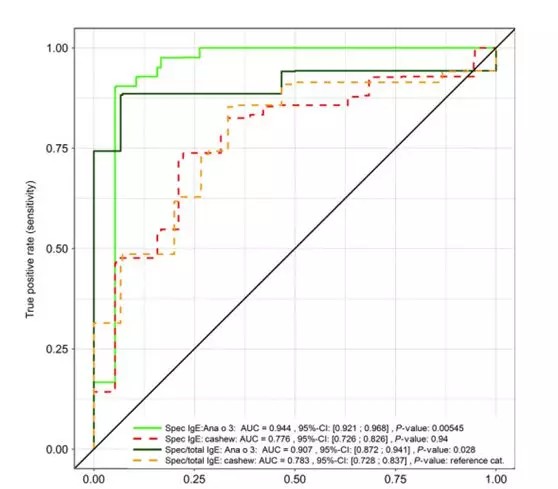 READ MORE
READ MORE -
2018.12.24
RATIONALE: Mites are one the most important sources of allergens associated with allergic diseases. Although immunotherapy is the only form of treatment that can alleviate these conditions, allergenic extracts used for such purposes are not well defined. READ MORE
READ MORE -
2018.12.24
RATIONALE: Peanut is an important food allergen because of its clinical severity and increasing prevalence, especially in some western countries. However few data came from China.METHODS: A careful history; skin prick test for peanut; specific IgE for peanut (ImmunoCAP); peanut challenge test, SDS-PAGE electrophoresis for peanut extract, immunoblot. READ MORE
READ MORE
 hth官方网页版中国有限公司
hth官方网页版中国有限公司
